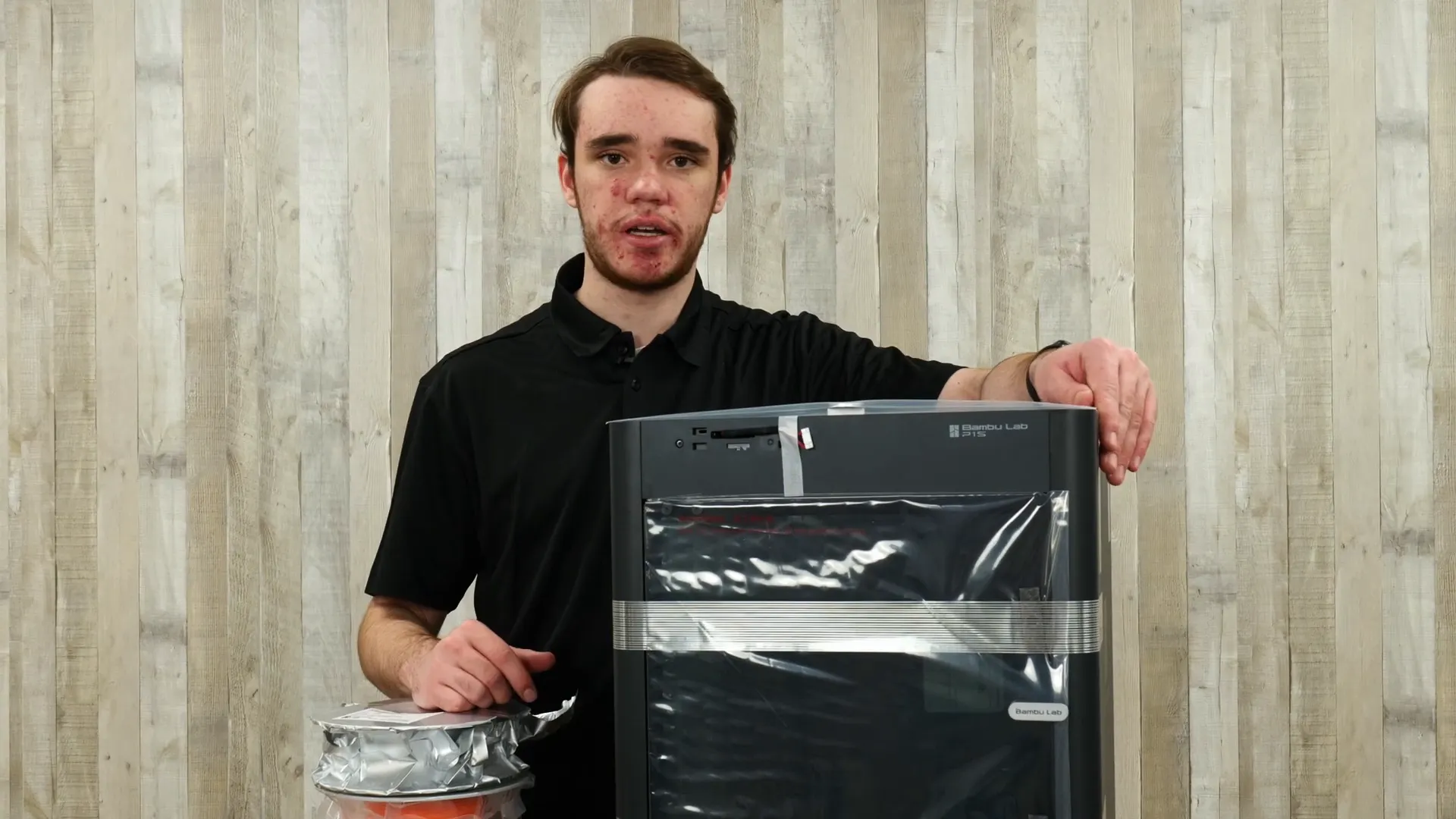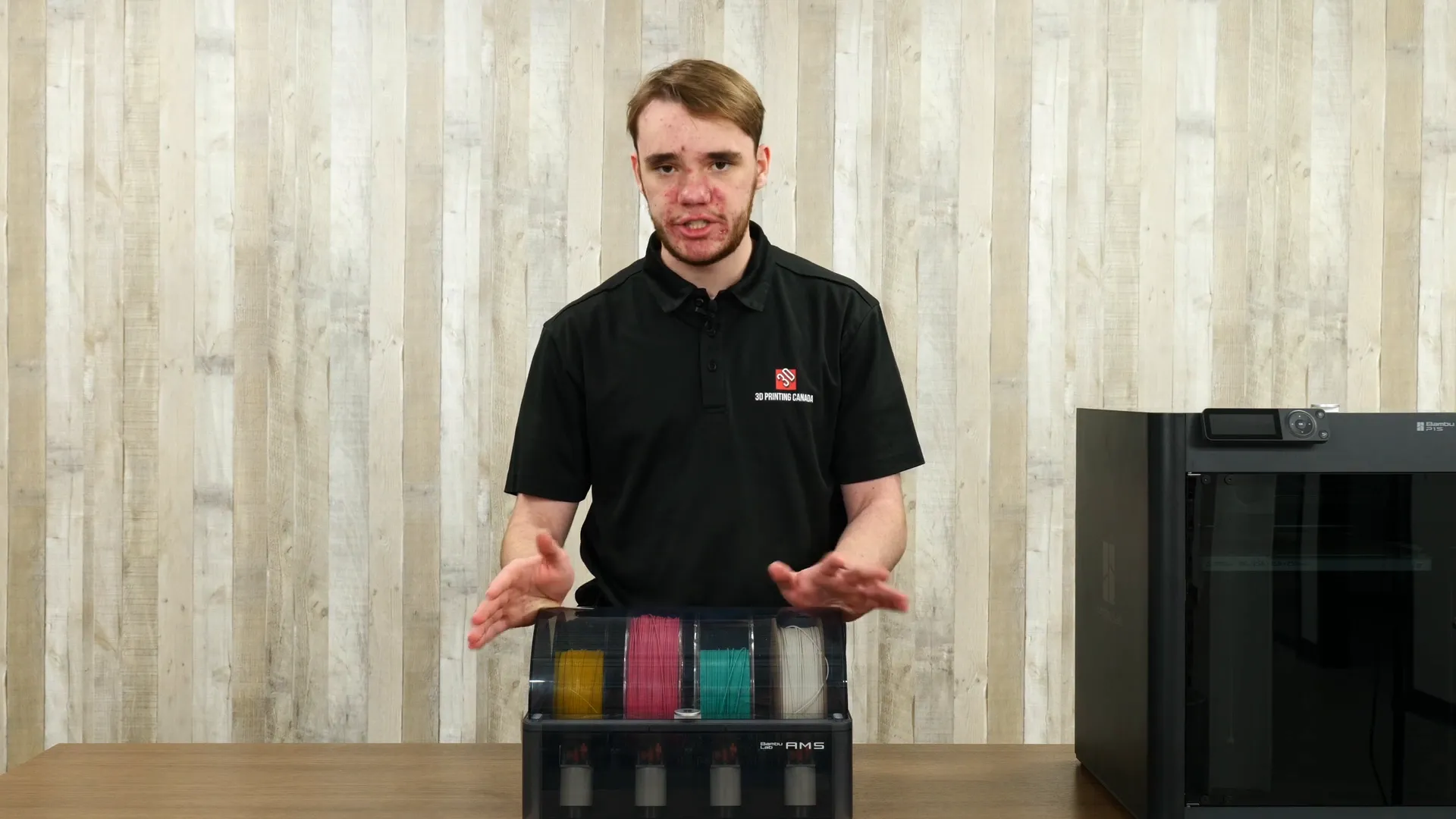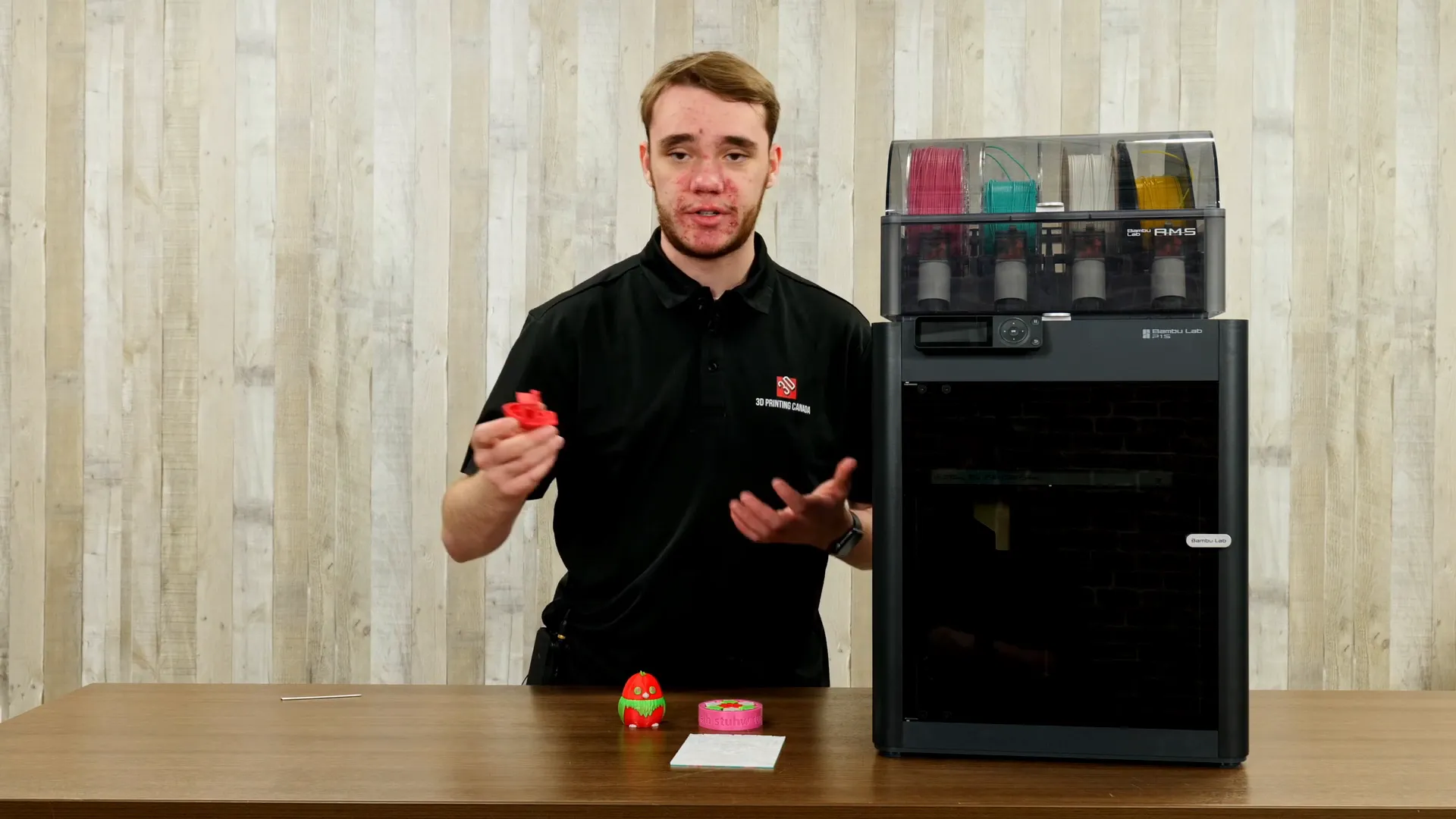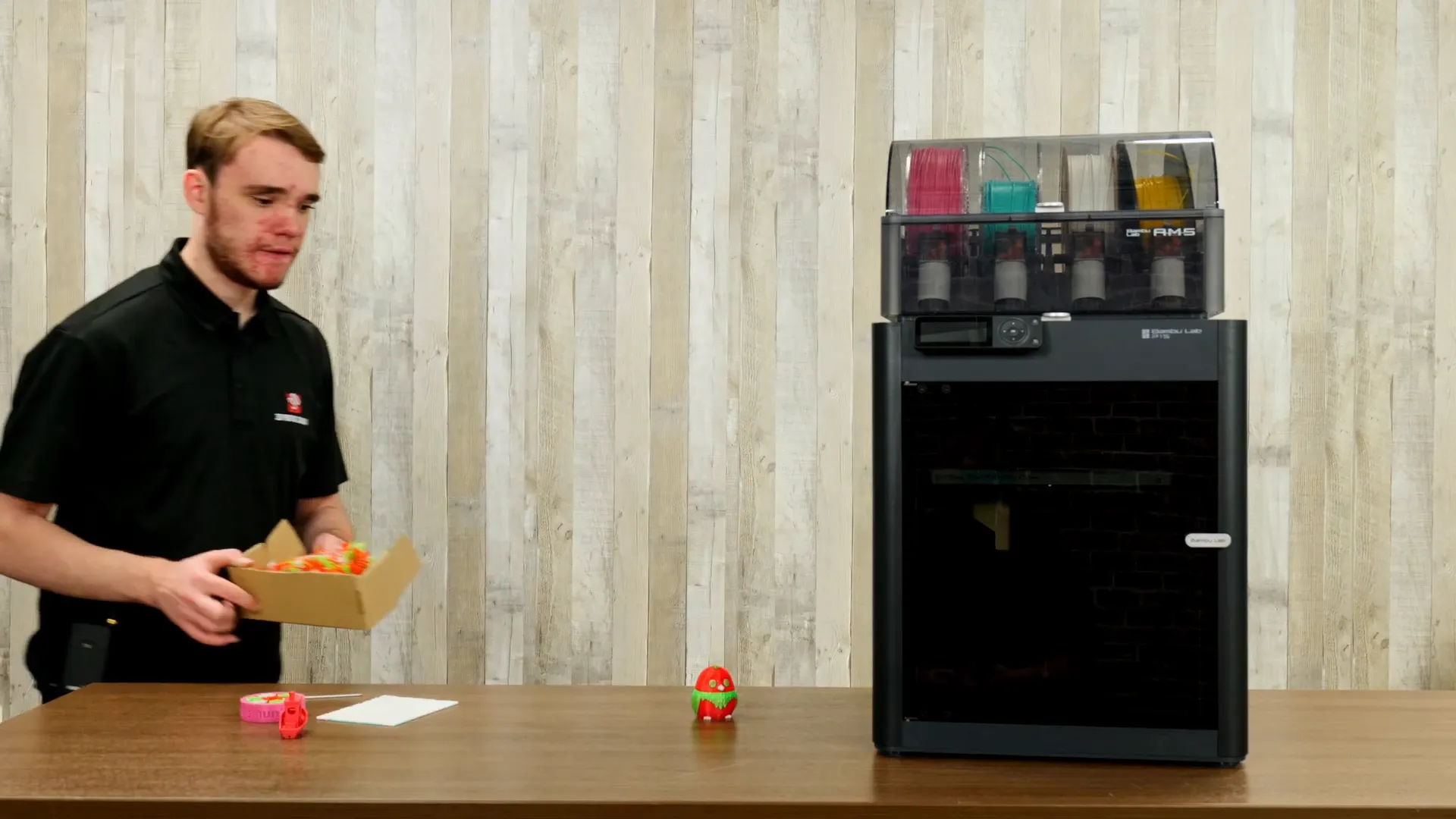Bambu Lab has made a name for itself in the 3D printing community with its innovative products. The P1S Combo, which includes the Automatic Material System (AMS), is one of their latest offerings. This blog post will delve into the unboxing experience, setup process, and performance of the P1S Combo, providing insights into its features and capabilities.
Unboxing the P1S Combo
The unboxing of the Bambu Lab P1S Combo was straightforward and uneventful. The packaging was simple, and there was no excessive wrapping to deal with. Inside the box, users can expect to find a variety of components that make up the kit.

- Three rolls of PLA filament (orange, green, and support material), each weighing about 200g.
- The printer itself, protected by plastic wrap and foam.
- An accessory box containing a screen, spool holder, extra hot ends, and tools.
Additionally, if purchased directly from the manufacturer, you will receive an extra 4 kg of filament, which adds significant value to the package.
Initial Setup Steps
Once the printer is unboxed, the setup process begins. The first step is to remove all the protective materials, including tape and foam. After that, the user must install the screen, which involves connecting a cable and securing it in place.

Next, plug in the printer and power it on. The initial screen prompts users to read the user manual carefully and ensures that all screws fixed to the hot bed are removed before proceeding.
After powering up, the printer runs a self-test to check its status, which is an essential step to ensure that everything is functioning correctly.
User Interface and Features
The P1S Combo features a user-friendly display that shows critical information such as nozzle temperature, bed temperature, and the current printing speed. The interface is intuitive, allowing for easy navigation through various settings.

Users can adjust printing speeds, manage filament loading and unloading, and control fan settings directly from the screen. The AMS settings are also accessible, making it easy to manage multiple filaments.
Setting Up the AMS
The AMS unit is a significant feature of the P1S Combo, allowing for multi-material printing. Setting it up involves attaching it to the printer and connecting various Bowden tubes for filament management.

Before use, it's crucial to remove any desiccant packets from the AMS and ensure that the Bowden tubes are correctly connected. This setup allows for seamless switching between different filament colors during prints.
Clearing Jams in the AMS
Occasionally, users may encounter jams in the Bambu Lab AMS. Clearing these jams involves several steps, including disconnecting the AMS from the printer and removing any obstructing filaments. A helpful tip is to ensure that the filament is flexible and not brittle before loading it into the AMS to prevent future jams.

By carefully following the steps to clear jams, users can maintain smooth operation and minimize downtime.
Test Prints and Performance
Once everything is set up, it's time to test the printer's capabilities. The first print was a solid red 'Beni' figure, which turned out well, showcasing even layer lines and good color saturation.

Following this, a variety of prints were tested, including a colored lithophane and an articulated bird. Each print demonstrated the P1S Combo's ability to handle complex designs and multiple colors effectively.
The lithophane, printed in yellow, cyan, magenta, and white, was particularly impressive, producing a vibrant and detailed image when backlit.
However, it should be noted that the AMS does produce a significant amount of waste during printing due to the purging process required for color changes. This is something that users should keep in mind when planning their prints.

Conclusion
The Bambu Lab P1S Combo is a robust and versatile 3D printer that stands out for its ease of use and advanced features like the AMS. While the initial setup is straightforward, users should be mindful of potential jams and the waste produced during multi-color prints. Overall, the P1S Combo offers excellent performance and is a solid investment for both hobbyists and professionals looking to expand their 3D printing capabilities.
For those interested in exploring the world of multi-material printing, the P1S Combo is an excellent choice that combines functionality with user-friendly design.


